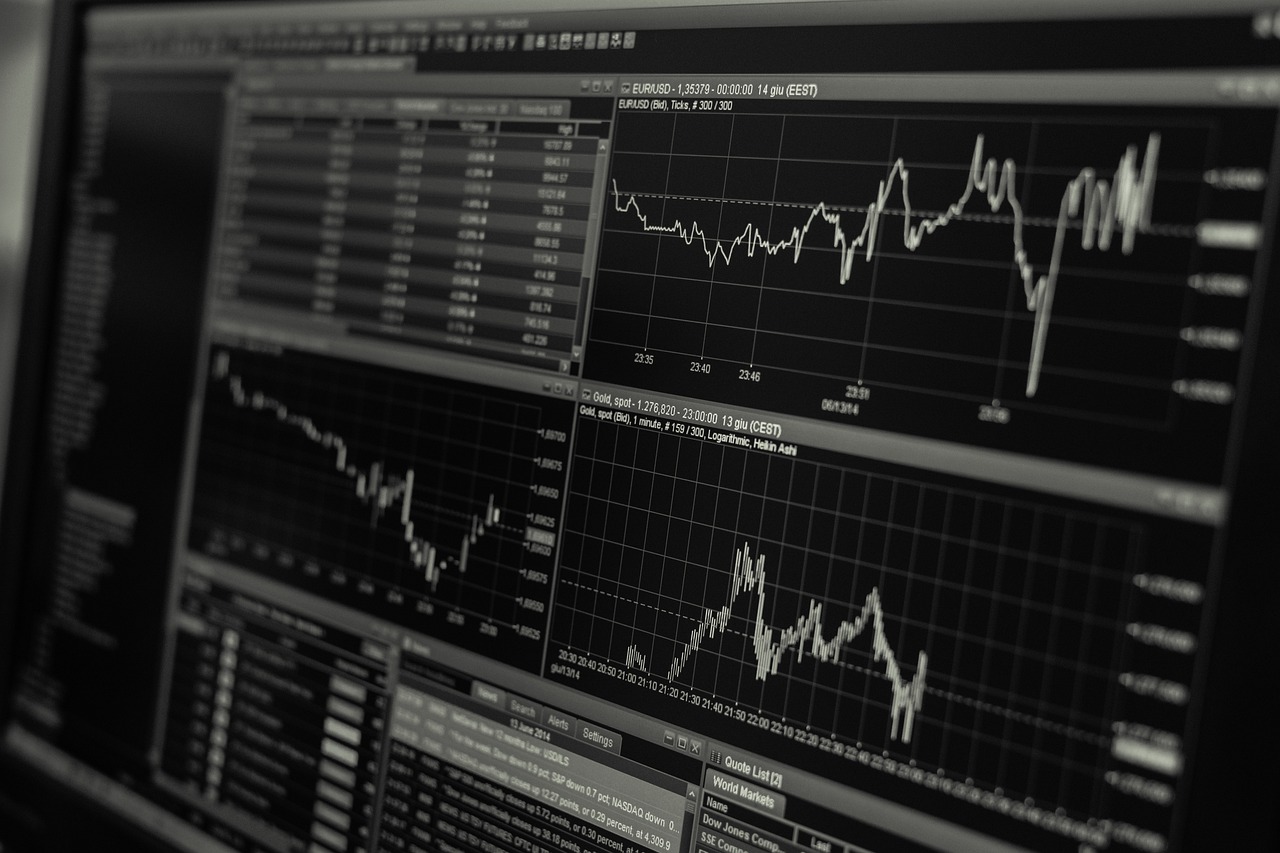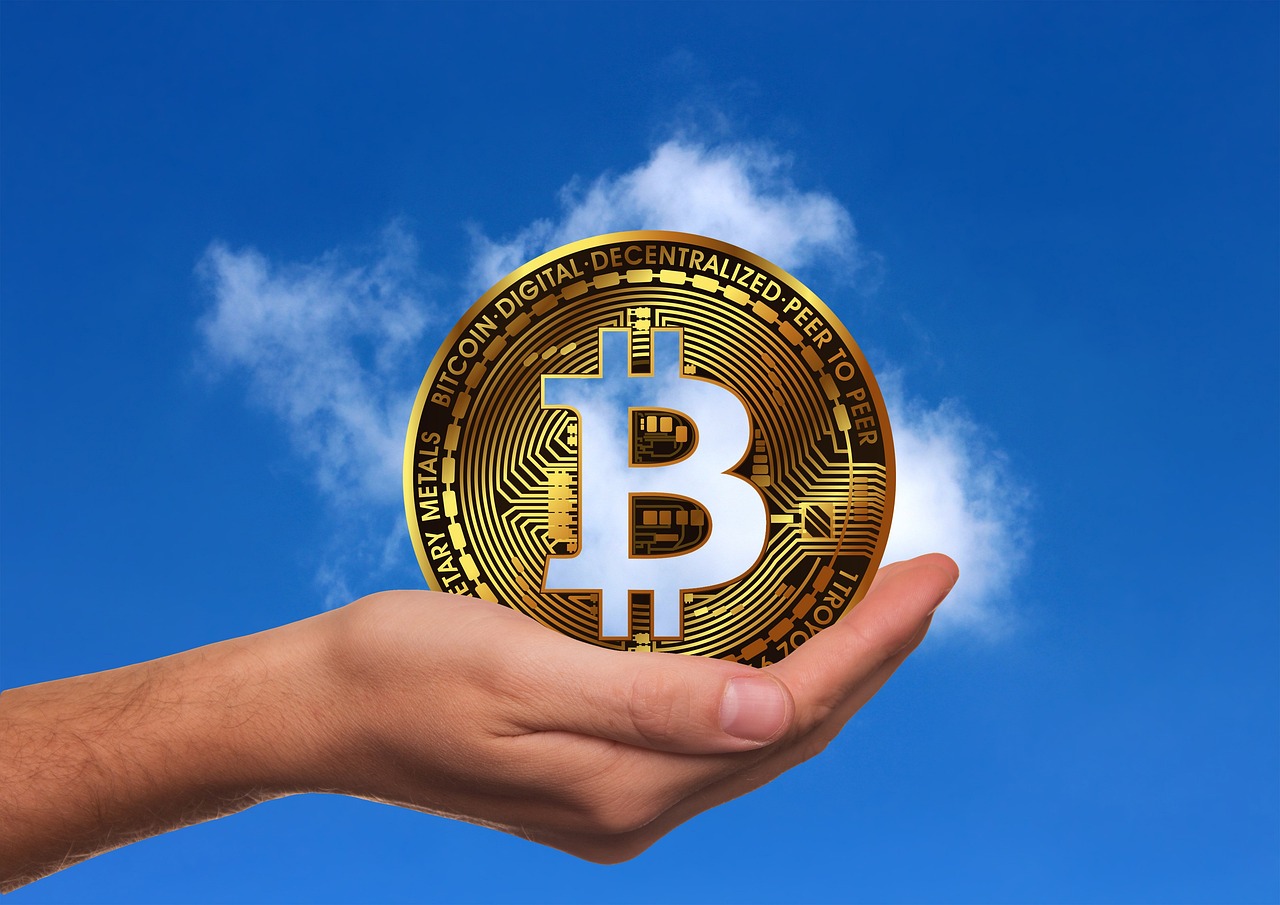Uniswap - A Deep Dive into Decentralized Trading
Welcome to the fascinating world of Uniswap, where trading isn't just a transaction—it's an experience! Imagine a bustling marketplace where buyers and sellers meet without the need for a middleman. This is precisely what Uniswap offers through its innovative decentralized trading platform. As the backbone of the Decentralized Finance (DeFi) ecosystem, Uniswap has revolutionized how we think about trading cryptocurrencies. By utilizing smart contracts and automated liquidity provision, it has made trading more accessible and efficient than ever before.
So, what makes Uniswap stand out in the crowded DeFi landscape? For starters, it operates on an automated market maker (AMM) model, which means that instead of relying on traditional order books, users can trade tokens directly from their wallets. This not only speeds up the trading process but also opens the door for anyone to participate in the liquidity provision. It's like having a personal trading assistant that works 24/7, ensuring you can make trades whenever you want without waiting for someone else to fill your order.
But let's dive deeper. Uniswap allows users to engage in liquidity pools, where they can deposit tokens to facilitate trading. Think of liquidity pools as community swimming pools, where everyone contributes to make the water enjoyable for all. In return for their contributions, liquidity providers earn fees generated from trades, creating a win-win situation. However, just like any investment, there are risks involved, such as impermanent loss, which we'll explore further in this article.
As we journey through this article, we will unravel the mechanics of Uniswap, from providing liquidity to understanding its latest features in Uniswap V3. We will also peek into the future of Uniswap and its role in the ever-evolving DeFi landscape. So, buckle up and get ready for an exciting ride into decentralized trading!
- What is Uniswap? Uniswap is a decentralized trading protocol that allows users to swap various cryptocurrencies directly from their wallets using liquidity pools.
- How does Uniswap work? Uniswap uses an automated market maker (AMM) model, allowing users to trade tokens without the need for traditional order books.
- What are liquidity pools? Liquidity pools are collections of funds provided by users to facilitate trading on Uniswap, where they earn fees in return.
- What is impermanent loss? Impermanent loss refers to the potential loss in value that liquidity providers may experience due to fluctuating token prices.
- What are the benefits of using Uniswap? Uniswap offers decentralized trading, user-friendly interfaces, and the ability to earn fees by providing liquidity, among other advantages.

Understanding Decentralized Finance (DeFi)
Decentralized Finance, commonly referred to as DeFi, is revolutionizing the financial landscape by eliminating the need for traditional intermediaries like banks and brokers. Imagine a world where you can lend, borrow, and trade assets without the constraints of centralized institutions. That’s exactly what DeFi aims to achieve! Built on blockchain technology, DeFi platforms offer financial services that are not only transparent but also accessible to anyone with an internet connection. This democratization of finance is akin to opening the gates of a fortress, allowing everyone to partake in financial opportunities that were once reserved for the privileged few.
The core principle of DeFi is to create an open financial system that operates on smart contracts—self-executing contracts with the terms of the agreement directly written into code. These smart contracts run on blockchain networks, primarily Ethereum, ensuring that transactions are secure, traceable, and irreversible. The beauty of this system lies in its ability to foster trust without the need for a central authority. For instance, when you lend your assets on a DeFi platform, you can rest assured that the smart contract will execute the terms of your agreement automatically, without the risk of human error or manipulation.
One of the most appealing aspects of DeFi is its accessibility. Unlike traditional finance, where you often need to jump through hoops to open an account or apply for a loan, DeFi platforms are open to anyone. All you need is a digital wallet and an internet connection. This opens up a world of possibilities for individuals in regions where traditional banking services are scarce or unavailable. It’s like having a global bank branch right in your pocket!
However, as with any financial system, DeFi comes with its own set of challenges. The lack of regulation can lead to vulnerabilities, such as smart contract bugs or rug pulls, where developers abandon a project after attracting investments. Therefore, while DeFi holds immense potential, it’s crucial for users to conduct thorough research and exercise caution. Understanding the risks involved is just as important as grasping the benefits.
In summary, DeFi is not just a buzzword; it represents a fundamental shift in how we think about money and financial services. By leveraging blockchain technology, it promotes transparency, efficiency, and inclusivity in finance. As the DeFi ecosystem continues to evolve, we can expect to see even more innovative solutions that challenge the status quo and empower individuals around the globe.

The Mechanics of Uniswap
Uniswap operates on a groundbreaking model known as an automated market maker (AMM). This innovative approach allows users to trade tokens directly from their wallets without the need for traditional intermediaries. Imagine walking into a store where you can directly swap your goods with others, bypassing the cashier. That’s exactly what Uniswap does for cryptocurrencies! By utilizing smart contracts, Uniswap eliminates the need for order books, which are a staple in conventional exchanges. Instead of matching buyers and sellers, Uniswap uses liquidity pools to facilitate trades, making the entire process seamless and efficient.
The beauty of Uniswap lies in its ability to provide liquidity through these pools. When users deposit their tokens into a pool, they’re not just sitting on the sidelines; they're actively participating in the ecosystem. This participation is crucial because it ensures that there’s always enough liquidity for others to trade. Think of liquidity pools as communal gardens where everyone contributes seeds (tokens), and in return, they can harvest fruits (trades) whenever they need. The more diverse and abundant the seeds, the better the harvest for everyone!
Liquidity pools are the backbone of Uniswap’s trading mechanism. When users deposit tokens into these pools, they become liquidity providers (LPs) and earn a share of the transaction fees generated from trades. This incentivizes users to contribute to the pool, ensuring that there’s always enough liquidity for trading. The fees earned can be seen as a reward for providing essential services to the trading community. It’s a win-win situation: users earn passive income while enabling others to trade effortlessly.
Providing liquidity on Uniswap is a straightforward process. Users simply need to deposit an equal value of two tokens into a specific pool. For instance, if you want to provide liquidity for ETH and DAI, you would need to deposit an equal dollar amount of both tokens. This method ensures that the pool maintains balance, allowing for efficient trading. However, it’s essential to be aware of the risks involved, particularly impermanent loss, which can occur when the prices of the tokens fluctuate significantly.
While the rewards of providing liquidity can be enticing, it’s crucial to understand the inherent risks. One of the primary concerns is impermanent loss, which happens when the price of the tokens you’ve deposited changes compared to when you deposited them. This can result in a lower value when you withdraw your tokens compared to simply holding them outside of the pool. It’s like investing in a stock that drops in value after you buy it; you might end up worse off than if you had just held onto your cash. Therefore, potential liquidity providers must weigh the risks against the potential rewards carefully.
Token swapping on Uniswap is designed to be user-friendly and efficient. Users can trade one cryptocurrency for another with just a few clicks. The interface is intuitive, guiding users through the process seamlessly. Imagine you’re at a farmer’s market, and you want to trade apples for oranges. Uniswap allows you to do just that—quickly and without hassle. This ease of use is one of the key factors contributing to Uniswap’s popularity, making it accessible for both seasoned traders and newcomers alike.
- What is Uniswap? Uniswap is a decentralized exchange that allows users to trade cryptocurrencies directly without intermediaries.
- How do liquidity pools work? Liquidity pools are collections of tokens that users deposit to facilitate trading, earning fees in return.
- What are the risks of providing liquidity? The main risk is impermanent loss, which occurs when the prices of the tokens in the pool change significantly.
- Can anyone provide liquidity? Yes, anyone can provide liquidity on Uniswap as long as they have the required tokens to deposit.

Liquidity Pools Explained
Liquidity pools are the lifeblood of Uniswap, acting as the foundation for its decentralized trading model. Imagine a bustling marketplace where traders can swap goods seamlessly; that’s precisely what liquidity pools do for cryptocurrencies. When users deposit their tokens into a liquidity pool, they contribute to a communal resource that facilitates trades for everyone involved. This system eliminates the need for traditional order books, making trading not only faster but also more efficient.
In essence, liquidity pools are collections of funds locked in smart contracts. These pools are created by users, known as liquidity providers (LPs), who deposit pairs of tokens, such as ETH and DAI, into the pool. The beauty of this setup is that it allows anyone to trade tokens directly from their wallets, with the smart contract managing the transactions seamlessly. Each time a trade is executed, a small fee is charged, which is then distributed among the liquidity providers based on their share of the pool. This incentivizes users to contribute their tokens, ensuring that there’s always enough liquidity available for trading.
To illustrate how liquidity pools work, consider the following table:
| Token Pair | Total Liquidity | Trading Volume | Fees Earned |
|---|---|---|---|
| ETH/DAI | 100 ETH + 200,000 DAI | 1,000,000 DAI | 1,000 DAI |
| USDC/USDT | 50,000 USDC + 50,000 USDT | 500,000 USDC | 500 USDC |
This table demonstrates how liquidity pools function in practice. The total liquidity represents the combined value of the tokens locked in the pool, while the trading volume shows the amount of tokens traded over a specific period. The fees earned are then distributed among the liquidity providers, rewarding them for their contributions.
Another critical aspect of liquidity pools is the concept of impermanent loss. This phenomenon occurs when the price of the tokens in the pool changes relative to the price of the tokens outside the pool. For example, if you provide liquidity for ETH and DAI, and the price of ETH rises significantly, you might find that you would have been better off simply holding onto your ETH rather than providing liquidity. Understanding this risk is essential for anyone looking to participate in liquidity provision.
In conclusion, liquidity pools are a revolutionary concept that enables decentralized trading on platforms like Uniswap. They provide the necessary liquidity for seamless transactions while rewarding users for their participation. However, as with any investment, it’s crucial to understand the associated risks, particularly impermanent loss, to make informed decisions.
- What are liquidity pools? Liquidity pools are collections of funds locked in smart contracts that facilitate trading on decentralized exchanges.
- How do I become a liquidity provider? You can become a liquidity provider by depositing an equal value of two tokens into a liquidity pool on Uniswap.
- What is impermanent loss? Impermanent loss is the potential loss in value that liquidity providers may experience due to price fluctuations of the tokens in the pool compared to holding them.
- How are fees earned from liquidity pools? Fees are generated from trades executed within the pool and are distributed among liquidity providers based on their share of the pool.

How to Provide Liquidity
Providing liquidity on Uniswap is a straightforward yet rewarding process that allows you to earn fees while contributing to the decentralized trading ecosystem. To start, you’ll need to have a cryptocurrency wallet, such as MetaMask, where you can store your tokens. The first step is to select a liquidity pool that you want to contribute to. Typically, this involves pairing two tokens, like ETH and DAI. The key here is to deposit an equal value of both tokens into the pool. For instance, if you decide to invest $100 in liquidity, you would deposit $50 worth of ETH and $50 worth of DAI.
Once you’ve chosen your tokens, head over to the Uniswap interface. It’s user-friendly and quite intuitive. You’ll navigate to the “Pool” section and select the option to add liquidity. After that, you can enter the amounts of each token you wish to deposit. Uniswap will automatically calculate the equivalent amount for the other token based on the current market price. It’s essential to double-check these amounts because providing liquidity requires precision; even a small error can impact your investment.
After confirming your deposit, you’ll need to approve the transaction in your wallet. This step ensures that Uniswap has permission to access your tokens. Once approved, you can submit the transaction, which will be processed on the Ethereum blockchain. Congratulations! You are now a liquidity provider.
However, before diving in, it’s crucial to understand the risks involved, especially impermanent loss. This occurs when the price of your deposited tokens changes compared to when you deposited them, potentially leading to a lower value than if you had simply held onto the tokens. To mitigate this risk, you could consider:
- Choosing stablecoin pairs, as they tend to have less price volatility.
- Monitoring the market conditions regularly.
- Diversifying your liquidity across multiple pools.
In summary, providing liquidity on Uniswap is not only a way to earn passive income through trading fees but also a vital contribution to the decentralized finance ecosystem. Just remember to weigh the potential rewards against the risks, and you'll be well on your way to becoming an effective liquidity provider!
1. What is liquidity provision?
Liquidity provision involves depositing tokens into a liquidity pool on a decentralized exchange like Uniswap, allowing others to trade those tokens while earning fees in return.
2. How do I choose the right liquidity pool?
Consider factors like the trading volume, the volatility of the tokens, and your risk tolerance. Stablecoin pairs are generally safer options.
3. What is impermanent loss?
Impermanent loss refers to the potential loss of value that liquidity providers may experience when the price of their deposited tokens changes significantly compared to when they were deposited.
4. Can I withdraw my liquidity anytime?
Yes, you can withdraw your liquidity at any time, but be aware of any fees or price changes that may affect your overall returns.
5. Are there fees associated with providing liquidity?
While you earn fees from trades within the pool, there might also be transaction fees when you deposit or withdraw your tokens.

Risks Associated with Liquidity Provision
Providing liquidity on Uniswap can be a lucrative venture, but it’s not without its pitfalls. One of the primary risks that liquidity providers face is known as impermanent loss. This phenomenon occurs when the price of the tokens in a liquidity pool diverges from their price at the time of deposit. Imagine you’re at a carnival, and you decide to hold onto two different balloons. If one balloon starts to float away while the other remains grounded, you might find yourself in a situation where the value of your balloons has changed significantly by the time you decide to let them go. This is similar to what happens in liquidity pools.
When you provide liquidity, your tokens are locked in the pool, and their value can fluctuate based on market conditions. If the price of one token rises significantly compared to the other, you may end up with a lower overall value than if you had simply held the tokens in your wallet. This loss is termed "impermanent" because if the prices return to their original state, the loss can be mitigated. However, if you withdraw your tokens during a period of divergence, the loss becomes permanent.
Another risk worth noting is the smart contract risk. Uniswap operates on complex smart contracts, and while they are generally considered secure, vulnerabilities can exist. If a hacker exploits a flaw in the contract, it could lead to a loss of funds for liquidity providers. Therefore, it’s crucial to stay informed about any updates or audits related to the smart contracts you are interacting with.
Additionally, market volatility can pose a significant risk. The cryptocurrency market is notoriously volatile, and sudden price swings can affect the profitability of providing liquidity. For instance, during a market crash, the value of your pooled tokens could plummet, leading to substantial losses. This volatility can be exacerbated by low trading volume in less popular trading pairs, which can lead to slippage and further impact the value of your holdings.
Lastly, liquidity providers should also be aware of the impermanent loss vs. trading fees. While the potential to earn fees from trades in the pool is enticing, these fees may not always compensate for the impermanent loss experienced. It’s important to conduct a thorough analysis of the expected fees versus the potential risks before diving into liquidity provision.
In summary, while providing liquidity on Uniswap can yield attractive rewards, it’s essential to understand and navigate the associated risks. By being aware of impermanent loss, smart contract vulnerabilities, market volatility, and the balance between fees and losses, you can make informed decisions that align with your investment strategy.
- What is impermanent loss? Impermanent loss is the temporary loss of funds experienced when providing liquidity due to price divergence of tokens in a pool.
- How can I mitigate impermanent loss? You can mitigate impermanent loss by choosing stablecoin pairs or by monitoring market conditions closely.
- Are Uniswap smart contracts safe? While generally secure, it’s important to stay informed about any vulnerabilities and updates to the smart contracts.
- What factors influence liquidity provision profitability? Factors include trading volume, market volatility, and the fee structure of the liquidity pool.

Token Swapping on Uniswap
Token swapping on Uniswap is a game-changer in the world of cryptocurrency trading. Imagine being able to exchange one digital asset for another with just a few clicks, all while maintaining control over your funds. That's precisely what Uniswap allows you to do! By utilizing its user-friendly interface, traders can easily swap tokens directly from their wallets without the need for a centralized exchange. This process not only enhances convenience but also aligns perfectly with the ethos of decentralization.
So, how does it work? When you initiate a swap on Uniswap, you're engaging with a smart contract that facilitates the transaction. The beauty of this system lies in its automated market maker (AMM) model, which means that prices are determined by the ratio of tokens in the liquidity pools rather than traditional order books. This creates a seamless trading experience where users can execute swaps efficiently, often at competitive rates.
To give you a clearer picture, let’s break down the token swapping process:
- Select Tokens: Choose the tokens you want to swap. For instance, you might want to exchange Ethereum (ETH) for Uniswap's native token, UNI.
- Input Amount: Enter the amount of the token you wish to swap. The interface will automatically calculate how much of the other token you will receive based on the current exchange rate.
- Review Transaction: Before finalizing, review the transaction details, including any fees that may apply.
- Confirm Swap: Hit the confirm button, and voilà! Your tokens will be swapped in a matter of seconds.
One of the standout features of token swapping on Uniswap is its transparency. Users can see the current prices, past performance, and even the liquidity available for each token pair, which helps in making informed decisions. Additionally, the decentralized nature of Uniswap means that you retain full custody of your assets throughout the process, unlike centralized exchanges where you might have to deposit your funds first.
However, it's essential to be aware of potential slippage—this is the difference between the expected price of a trade and the actual price at which the trade is executed. In volatile markets, slippage can significantly impact your transaction, so Uniswap provides options to set slippage tolerance levels to safeguard your trades.
In summary, token swapping on Uniswap epitomizes the future of decentralized finance. It empowers users by providing a straightforward, efficient, and secure way to trade cryptocurrencies without intermediaries. As you navigate through the DeFi landscape, mastering token swaps on Uniswap will undoubtedly enhance your trading experience and open up a world of possibilities.
Here are some common questions that users often have about token swapping on Uniswap:
- What are the fees for swapping tokens on Uniswap? Fees vary based on the liquidity pool and the amount being swapped. It's essential to check the current rates before proceeding.
- Can I swap any token on Uniswap? You can swap any ERC-20 token that has a liquidity pool on Uniswap. Always ensure that the token you wish to swap is supported.
- Is there a limit to how much I can swap? While there are no strict limits, larger swaps may incur higher slippage. It's advisable to monitor your transaction size accordingly.

Understanding Uniswap V3 Features
Uniswap V3 has taken the world of decentralized finance by storm, introducing a suite of innovative features that enhance the trading experience for users and liquidity providers alike. One of the standout features is concentrated liquidity, which allows liquidity providers to allocate their funds within specific price ranges. This means that instead of spreading their investments thinly across all possible prices, they can focus their capital where it’s most needed. Imagine a garden where you can choose to water only the plants that are struggling; this targeted approach maximizes the potential for growth and yield.
Additionally, Uniswap V3 offers multiple fee tiers, which is a game-changer for liquidity providers. By allowing them to select their risk-reward profile, they can earn fees that are commensurate with the level of risk they are willing to take. For instance, if a provider chooses a more volatile trading pair, they might opt for a higher fee tier to compensate for the increased risk of impermanent loss. This feature gives users more control over their investments, making the platform not just a trading venue but a customizable investment tool.
To illustrate how these features work together, consider the following table that summarizes the benefits of concentrated liquidity and multiple fee tiers:
| Feature | Benefit |
|---|---|
| Concentrated Liquidity | Maximizes returns by allowing providers to focus capital where it is most effective. |
| Multiple Fee Tiers | Enables providers to align their risk tolerance with potential earnings. |
This dual approach not only enhances capital efficiency but also makes Uniswap V3 a more attractive option for both seasoned traders and newcomers. The ability to manage risk and tailor strategies according to market conditions is invaluable. Plus, with the growing interest in DeFi, these features position Uniswap V3 as a leader in the space, setting a precedent for what decentralized exchanges can achieve.
As we delve deeper into the mechanics of Uniswap V3, it's essential to consider how these features impact the overall DeFi ecosystem. The enhanced capital efficiency means that liquidity is more readily available for traders, which can lead to tighter spreads and better prices. This is akin to having a bustling marketplace where vendors are eager to sell, ensuring that buyers get the best possible deals.
In summary, Uniswap V3's features like concentrated liquidity and multiple fee tiers are not just technical enhancements; they represent a significant evolution in how decentralized exchanges operate. They empower users, improve trading conditions, and ultimately contribute to a more robust DeFi ecosystem. As the landscape continues to evolve, staying informed about these features will be crucial for anyone looking to navigate the world of decentralized trading successfully.
- What is concentrated liquidity? Concentrated liquidity allows liquidity providers to allocate their funds within specific price ranges, maximizing returns and improving market efficiency.
- How do multiple fee tiers work? Multiple fee tiers enable liquidity providers to choose their risk-reward profile, allowing them to earn different fees based on market volatility and their selected trading pairs.
- What are the risks of providing liquidity on Uniswap? Risks include impermanent loss, which occurs when the prices of tokens change compared to when they were deposited in the liquidity pool.

Concentrated Liquidity
Concentrated liquidity is a groundbreaking feature introduced with Uniswap V3 that has significantly transformed how liquidity providers (LPs) interact with the platform. Imagine being able to focus your investment in a specific area of the price spectrum rather than spreading it thinly across all possible prices. This innovative approach allows LPs to concentrate their capital where it is most likely to be utilized, thereby enhancing their potential returns. It's akin to a farmer choosing to plant crops in the most fertile parts of their land rather than scattering seeds everywhere, hoping for the best.
In practical terms, concentrated liquidity means that LPs can set price ranges for their liquidity. For example, if an LP believes that the price of a certain token pair will remain between $100 and $200, they can allocate their funds solely within that range. This targeted investment not only increases the efficiency of capital but also reduces the amount of liquidity that is idle, thus improving the overall trading experience for users on Uniswap.
Moreover, the impact of concentrated liquidity is twofold. First, it allows LPs to earn higher fees because their capital is more likely to be used in trades. The more trades that occur within the specified price range, the more fees the LP earns. Second, it enhances the trading experience for users, as tighter liquidity means better price execution and reduced slippage. This is particularly beneficial in volatile markets where every fraction of a cent counts.
To illustrate the benefits of concentrated liquidity, consider the following table:
| Price Range | Liquidity Provided | Potential Fees Earned |
|---|---|---|
| $100 - $200 | $10,000 | $500 |
| $50 - $100 | $5,000 | $200 |
| $200 - $300 | $2,000 | $50 |
This table demonstrates how concentrating liquidity within a specific price range can lead to significantly higher potential fees compared to a broader allocation. As you can see, the more focused the liquidity, the more earnings an LP can achieve.
In conclusion, concentrated liquidity is not just a feature; it is a paradigm shift in how liquidity is managed on decentralized exchanges. It empowers LPs to make strategic decisions about their investments, ultimately leading to a more efficient and profitable trading ecosystem. As the DeFi landscape continues to evolve, understanding and leveraging concentrated liquidity will be essential for anyone looking to maximize their returns on platforms like Uniswap.
- What is concentrated liquidity? Concentrated liquidity allows liquidity providers to allocate their funds within specific price ranges, maximizing returns by focusing capital where it is most needed.
- How does concentrated liquidity benefit liquidity providers? It enables LPs to earn higher fees by having their capital utilized more effectively, as trades occur within the specified price ranges.
- Can I change my price range after providing liquidity? Yes, liquidity providers can adjust their price ranges at any time, but doing so may incur transaction fees.

Multiple Fee Tiers
Uniswap V3 has taken the concept of liquidity provision to the next level by introducing . This innovative feature allows liquidity providers (LPs) to select from different fee structures based on their risk tolerance and the volatility of the trading pairs they choose to support. Imagine being able to tailor your investment strategy to your own comfort level—this is precisely what multiple fee tiers enable!
In essence, liquidity providers can opt for higher fees when they believe that a trading pair is likely to experience greater price fluctuations, thereby maximizing potential earnings. Conversely, they may choose lower fee tiers for more stable pairs, where the trading volume might be higher, but the price movements are less pronounced. This flexibility not only enhances the overall user experience but also promotes a more dynamic and responsive market.
Here’s a quick breakdown of how the fee tiers work:
| Fee Tier | Typical Use Case | Potential Risks |
|---|---|---|
| 0.05% | Stable pairs with low volatility | Lower earnings due to stable price range |
| 0.30% | Moderately volatile pairs | Moderate risk with balanced returns |
| 1.00% | Highly volatile pairs | Higher risk of impermanent loss |
This tiered structure empowers liquidity providers by granting them the ability to manage their investments more effectively. However, it’s essential to understand that with greater potential rewards come greater risks. For instance, while a higher fee tier might yield more earnings during active trading, it also exposes LPs to the risk of impermanent loss if the prices of the tokens in the pool fluctuate significantly.
Ultimately, the introduction of multiple fee tiers in Uniswap V3 is a game-changer for liquidity providers. It allows them to align their investment strategies with their individual risk profiles, making decentralized trading not just more accessible, but also more profitable. As the DeFi landscape continues to evolve, features like these will likely play a critical role in attracting more users to the platform and enhancing the overall trading experience.
- What are the benefits of using multiple fee tiers on Uniswap?
Multiple fee tiers allow liquidity providers to optimize their earnings based on market conditions and personal risk preferences. - Can I switch fee tiers after providing liquidity?
While you cannot change the fee tier of an existing liquidity position, you can withdraw your liquidity and reinvest it in a different tier. - What is impermanent loss?
Impermanent loss occurs when the price of tokens in a liquidity pool diverges significantly, potentially leading to lower returns compared to simply holding the tokens.

The Future of Uniswap and DeFi
The future of Uniswap and the DeFi landscape is nothing short of exhilarating. As we stand on the brink of a financial revolution, Uniswap is not just a participant but a pioneer, constantly evolving and adapting to the changing tides of the cryptocurrency world. With the rapid advancements in technology and the growing interest in decentralized finance, Uniswap is set to redefine how we perceive trading and liquidity provision.
One of the most exciting prospects is the potential for **interoperability** among various blockchain networks. Imagine a world where assets from Ethereum can seamlessly interact with those on Binance Smart Chain or Solana. This kind of cross-chain compatibility could significantly enhance liquidity and trading opportunities, allowing users to capitalize on price differences across platforms. Uniswap, with its innovative approach, is well-positioned to lead this charge, making decentralized trading more accessible than ever.
Moreover, as regulatory frameworks around cryptocurrencies continue to develop, Uniswap's decentralized nature offers a robust solution for compliance without sacrificing user autonomy. The ability to trade without intermediaries not only promotes **transparency** but also empowers users to take control of their financial destinies. This shift towards user-centric finance is likely to attract a broader audience, including traditional investors who are beginning to explore the DeFi space.
Uniswap's commitment to enhancing user experience is evident in its ongoing developments. The introduction of features like **concentrated liquidity** and **multiple fee tiers** in Uniswap V3 exemplifies its focus on optimizing capital efficiency for liquidity providers. As the platform continues to innovate, we can expect even more sophisticated tools and features that cater to the diverse needs of traders and investors alike.
Furthermore, the community-driven nature of Uniswap means that the platform's evolution will be guided by its users. This democratic approach encourages feedback and collaboration, ensuring that the platform remains relevant and responsive to the needs of its community. As more users participate, we can anticipate a flourishing ecosystem where ideas and innovations are shared freely, leading to groundbreaking advancements in the DeFi space.
In conclusion, the future of Uniswap and DeFi is bright and full of potential. With its focus on user experience, interoperability, and community involvement, Uniswap is not just shaping the current landscape but is also paving the way for a more inclusive and efficient financial future. As we embrace this transformation, it's essential to stay informed and engaged, as the next big leap in decentralized finance may be just around the corner.
- What is Uniswap? Uniswap is a decentralized trading protocol that allows users to swap various cryptocurrencies directly from their wallets without the need for intermediaries.
- How does Uniswap work? Uniswap utilizes an automated market maker (AMM) model, where liquidity pools facilitate trading through smart contracts.
- What are liquidity pools? Liquidity pools are collections of funds deposited by users to provide liquidity for trading on the platform, earning fees in return.
- What is impermanent loss? Impermanent loss refers to the potential loss in value that liquidity providers may experience when the prices of tokens in a liquidity pool fluctuate significantly.
- What are the benefits of using Uniswap? Benefits include direct trading from wallets, no intermediaries, earning fees from liquidity provision, and a user-friendly interface.
Frequently Asked Questions
- What is Uniswap?
Uniswap is a decentralized exchange (DEX) that allows users to trade cryptocurrencies directly from their wallets without the need for a centralized intermediary. It operates on the Ethereum blockchain using an automated market maker (AMM) model, enabling users to swap tokens seamlessly.
- How does Uniswap work?
Uniswap works by utilizing liquidity pools where users deposit pairs of tokens. These pools facilitate trading by allowing users to swap one token for another based on the current liquidity available. Smart contracts handle the transactions, ensuring transparency and security.
- What are liquidity pools?
Liquidity pools are collections of tokens locked in a smart contract that provide liquidity for trading on Uniswap. When users trade tokens, they draw from these pools, and in return, liquidity providers earn a portion of the transaction fees generated.
- How can I provide liquidity on Uniswap?
To provide liquidity on Uniswap, you need to deposit an equal value of two tokens into a liquidity pool. This process is straightforward, but it's important to understand the risks involved, such as impermanent loss, which can affect your returns.
- What is impermanent loss?
Impermanent loss occurs when the price of the tokens in a liquidity pool changes compared to when you deposited them. This can lead to a situation where the value of your investment is less than if you had simply held onto the tokens outside of the pool.
- What are the benefits of Uniswap V3?
Uniswap V3 introduced features like concentrated liquidity and multiple fee tiers, which enhance capital efficiency. Liquidity providers can now allocate their funds to specific price ranges, maximizing returns while having more control over their investments and associated risks.
- Can I earn fees as a liquidity provider?
Yes! By providing liquidity to Uniswap, you can earn fees from trades that occur in the pools you contribute to. The amount you earn depends on the trading volume and the fees associated with the specific pool.
- Is Uniswap safe to use?
While Uniswap is generally considered safe due to its decentralized nature and smart contracts, users should be aware of the risks associated with liquidity provision and market volatility. It's essential to do your research and understand the potential downsides before participating.
- What is the future of Uniswap and DeFi?
The future of Uniswap and decentralized finance (DeFi) looks promising as more users adopt blockchain technology for financial transactions. With ongoing innovations and enhancements, Uniswap aims to cater to evolving user needs and improve the overall trading experience.



















